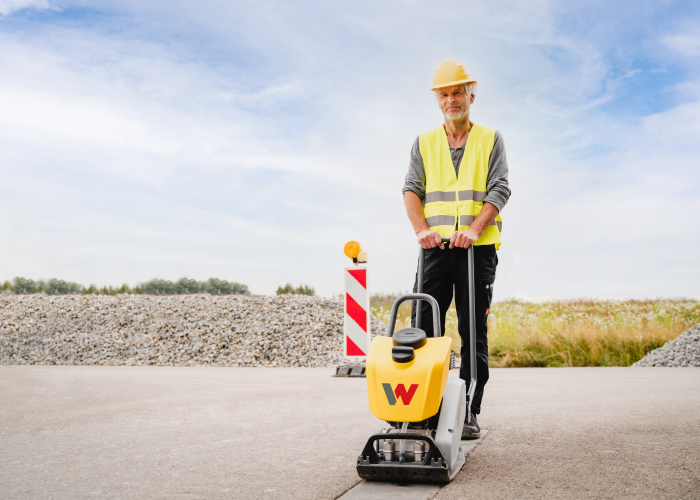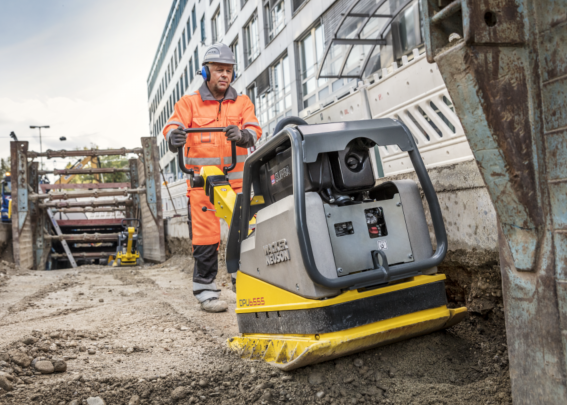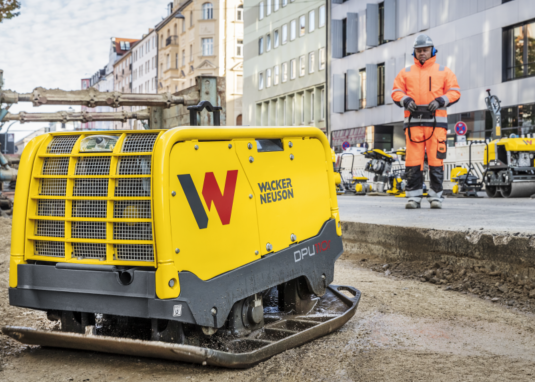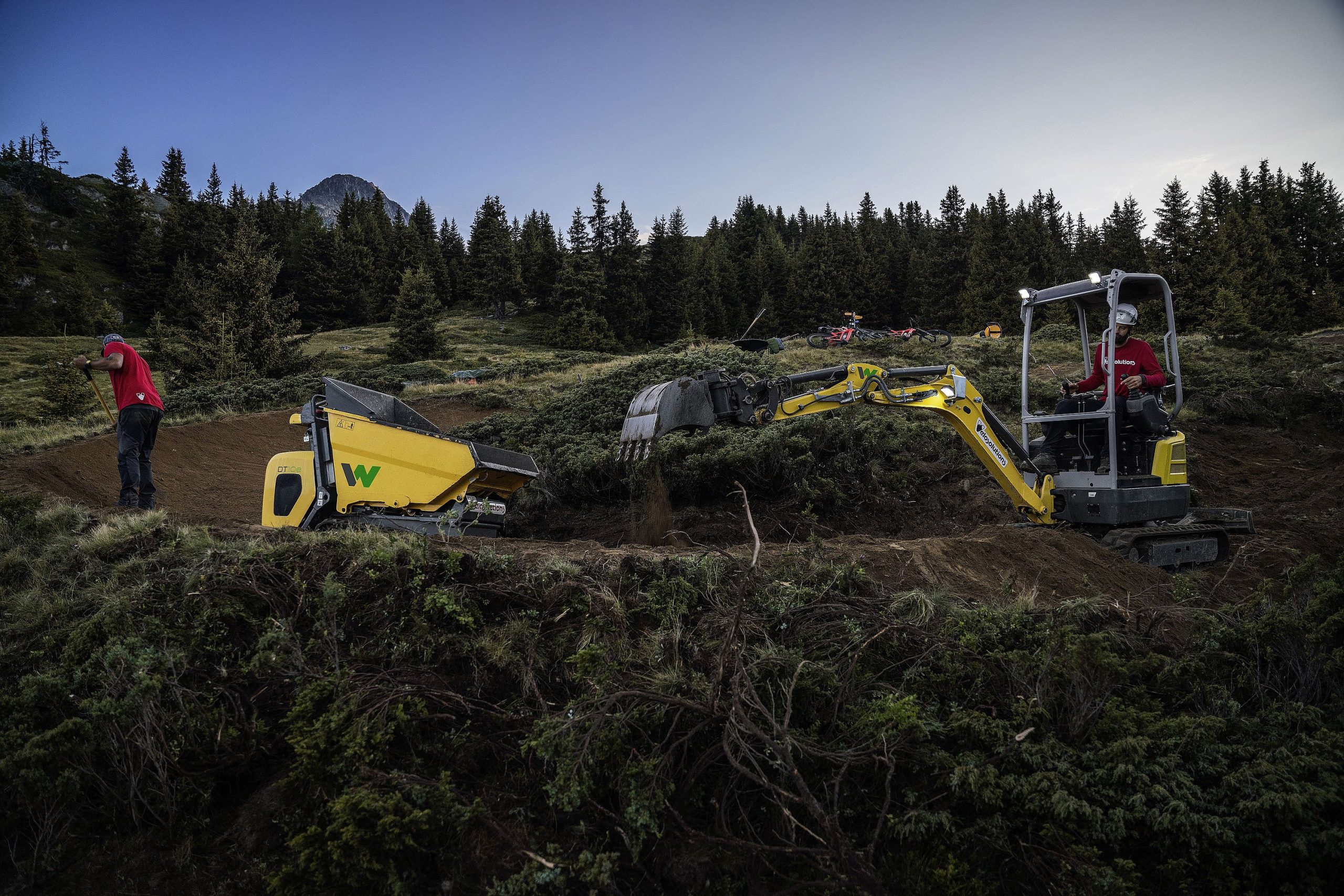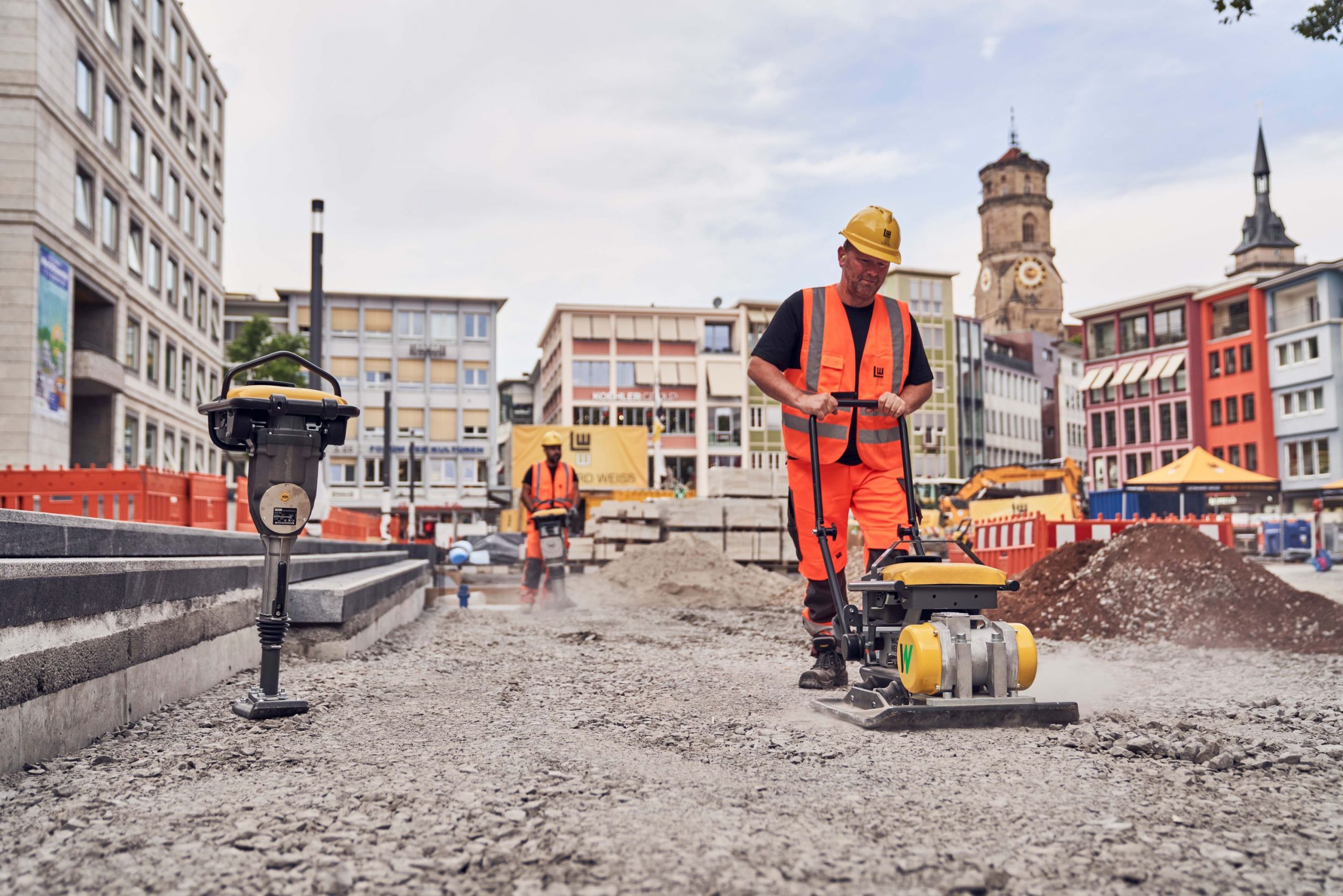Whether it’s coarse gravel, paving stones or soil: in soil compaction, it all depends on selecting the right construction equipment. But when is the vibratory rammer the right helper, and when is it the vibratory plate? And above all: which model?
Vibratory plate or vibratory rammer: the right machine for every kind of work
Before a vibratory rammer or a vibratory plate goes into application, different factors should be considered. With soil, the first thing to consider is its character. That is, the question is whether the ground to be compacted is cohesive or non-cohesive. Also, it depends on the construction site conditions. What matters is the degree of compaction required (proctor density). In choosing between a vibratory rammer and a vibratory plate, different tender conditions and the question of economy are also decisive.

The right size for every application – the range of vibratory rammers by Wacker Neuson offers a wide variety of models.
Vibratory rammers at work – maneuverable and flexible
The vibratory rammer is a maneuverable and light compaction machine that can get into almost any corner – an advantage in comparison with the vibratory plate . Even when backfilling, work can be done close to walls and foundations. With it, precise work is possible, and it is used in totally different areas of application: compacting cohesive soils or large lifts, laying interlocking paving stones and e.g. smoothing asphalt. Generally, the following applies: at different stroke heights, the impact intensity changes.
Battery-powered rammers for noise and exhaust emission sensitive environments

The battery-powered AS30e: perfectly suited for compaction of pipe branch points in trenches.
Battery-powered vibratory rammers work without direct exhaust emissions and are therefore especially suited to compaction in poorly ventilated areas or trenches. In 2015, Wacker Neuson put the first battery-powered rammer in the world on the market and meanwhile offers three models (AS30e, AS50e and AS60e), with which energy savings of up to 65 percent are possible!
2 stroke rammers with minimal emissions

Wacker Neuson Düsseldorf Tombers Glasfaserbaustelle
The 2 stroke rammers by Wacker Neuson (read more in this article) are offered with an operating weight of around 30 to 70 kilograms. The different stroke heights of the individual models allow a wide variety of tasks to be accomplished. No matter whether it’s sandy soils, cohesive soils, gravel, split, slag, lean concrete or crushed stone – the 2 stroke rammers are the right choice here. The special thing is: only Wacker Neuson offers 2 stroke rammers! They are driven by the WM80 engine, specially developed by Wacker Neuson, and are distinguished by the lowest overall amount of emissions on the market.
4 stroke and diesel rammers: for heavy applications

4-stroke rammer BS60-4: high impact energy for powerful compaction.
These are heavier than 2 stroke rammers and come with a large stroke and a high ramming frequency, thus: 4 stroke and diesel rammers. With their 65 to 83 kilogram net weight and the high impact energy, they even take on cohesive, mixed and granular soils.
The vibratory plate. The all-round compactor.
No matter whether it’s a terrace, garden, driveway or farm: with the application of a vibratory plate , the character of the soil doesn’t matter. It compacts cohesive and non-cohesive soils and mixed soils, and is suited to pavement work as well as asphalt. And the bandwidth of vibratory plates by Wacker Neuson ranges from models with a centrifugal force of ten to 130 kilonewtons. In short: the right machine for every application!
Conclusion
In a question of vibratory rammer or vibratory plate, the soil character and the available space should be checked first and then the required degree of compaction determined. Vibratory rammers are suited to confined and narrow areas and are easier to transport due to their lower weight. Vibratory plates have an extremely wide variety of applications. They are also offered optionally with compaction control (learn more in this article).
Want to learn more about the Wacker Neuson compaction machines? Read more here.
Wacker Neuson is proud to be a global brand. Products and services vary from country to country and may not be available in your local market.
We would be pleased if you share our article or leave us a comment!


